Bush foods and tools
For tens of thousands of years, the area around Uluru and Kata Tjuta provided Anangu with everything they needed for survival — food, water, shelter, and medicine.
What looks like a harsh desert landscape is actually a place filled with life and abundant supplies, the equivalent of a modern-day supermarket.
Before colonisation, Anangu used the environment to its full advantage. Deep knowledge of the ecosystem and seasons ensured a bountiful and sustainable life.
Anangu men and women took on different, but equally important, roles in society to ensure access to all the foods and tools needed for survival. This separation of tasks, known as men’s and women’s work, is a part of Tjukurpa, or traditional law.
Today, Anangu still hunt, gather and prepare foods according to the law. This knowledge is highly valued and Anangu Elders are keen to pass it on to children and grandchildren.
One resource, many uses
Anangu used many different parts of plants and animals to ensure no resource went to waste.
For example, each part of the wanari (mulga) tree has an important traditional use.
The heavy, hard wood is the main source of firewood for cooking and smoking meat.
The tree’s larger branches and trunk can be carved into miru (spear throwers), mukulpa (barbs), wata (spearheads), kali (boomerangs) and wana (digging sticks). The leafy branches were used to build wiltja (shelters) and yuu (windbreaks).
Wanari also provide many staple foods for Anangu. Ground mulga seeds can be mixed with a little water to make latja, a nourishing paste. Tarulka (mulga apples) are collected and eaten when they are a reddish colour. Some insects leave clear sweet lumps along the smaller branches, which Anangu eat as a lolly.
Types of bush foods eaten by Anangu
Mai (pronounced may)
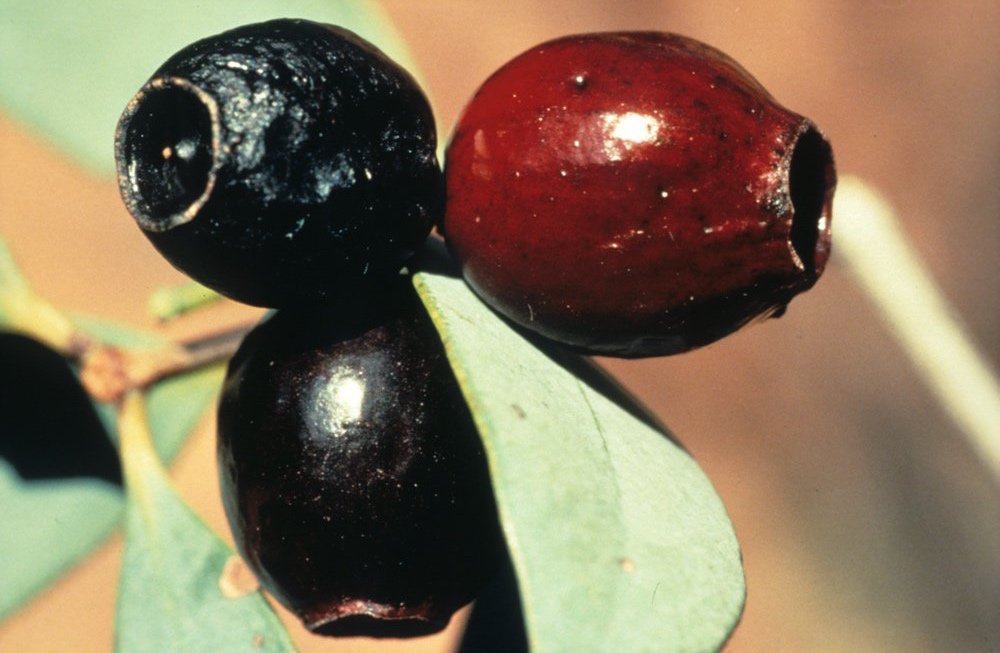 Bush plum
Bush plum
Mai means ‘food from plants’ and includes:
- vegetables such as tjanmata (bush onion) and wakati (native pigweed)
- fruits such as kampurarpa (desert raisin or bush tomato), arnguli (bush plum), ili (native fig) and wayanu (quandong)
- seeds from plants such as wakalpuka (dead finish) and wangunu (woollybutt grass).
Tjuratja (pronounced joo-rrat-ja)
 Honey ants. Photo: Stanley Breeden
Honey ants. Photo: Stanley Breeden
Tjuratja is sweet food, such as honey grevillea nectar and tjala (honey ants).
Honey ants live in deep underground nests and it requires a lot of skill to collect them. You eat the ant by holding its body and popping the abdomen filled with honey-like syrup into your mouth.
Maku (pronounced mah-koo)
 Witchetty grubs
Witchetty grubs
Maku means edible grubs such as witchetty grubs. These white, wood-eating grubs are found in the roots of trees and are a tasty and important source of protein.
Kuka (pronounced kooka)
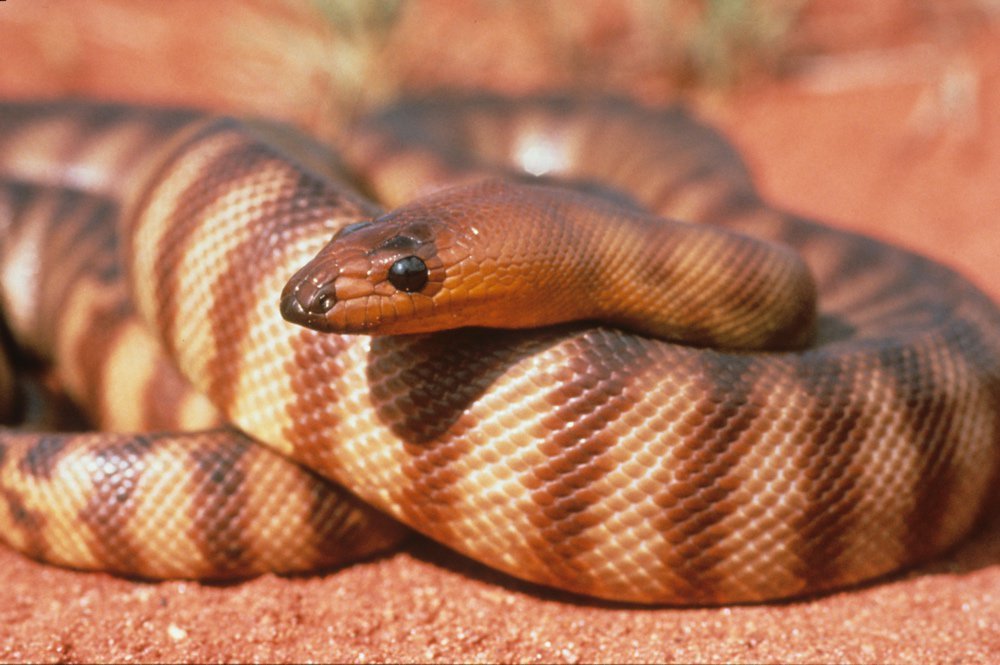 Woma python. Photo: Stanley Breeden
Woma python. Photo: Stanley Breeden
Kuka means edible animals such as sand goanna, perentie, emu, woma python and kangaroo. This category also includes the eggs of birds and lizards.
Download our fact sheet on traditional bush foods
Women’s tools
Women’s tools were mainly used to collect and prepare food.
These traditionally designed implements are now often made for sale as artefacts and are also used for demonstration and learning purposes. You can buy traditional wooden tools at the Cultural Centre.
Bowls

Women use three types of wooden bowls:
- Wira is a small bowl used for digging or collecting small fruits like berries. It is also used as a drinking cup.
- Kanilpa is a larger bowl mostly used for cleaning seeds.
- Piti is the largest dish and is shaped to carry water.
Women’s digging stick (wana)
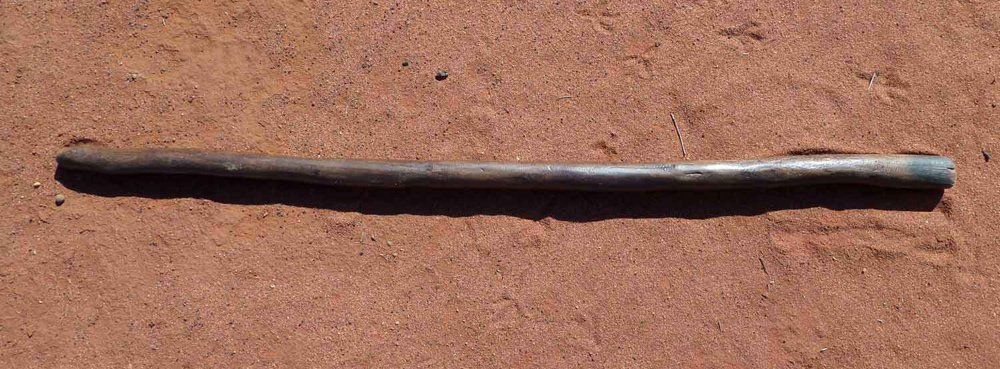
Made from a stout length of mulga wood with a sharpened, fire-hardened point, the wana was used to dig out grubs, edible roots and burrowing animals. Today a shovel usually takes the place of a wana.
Woman’s head ring (manguri)
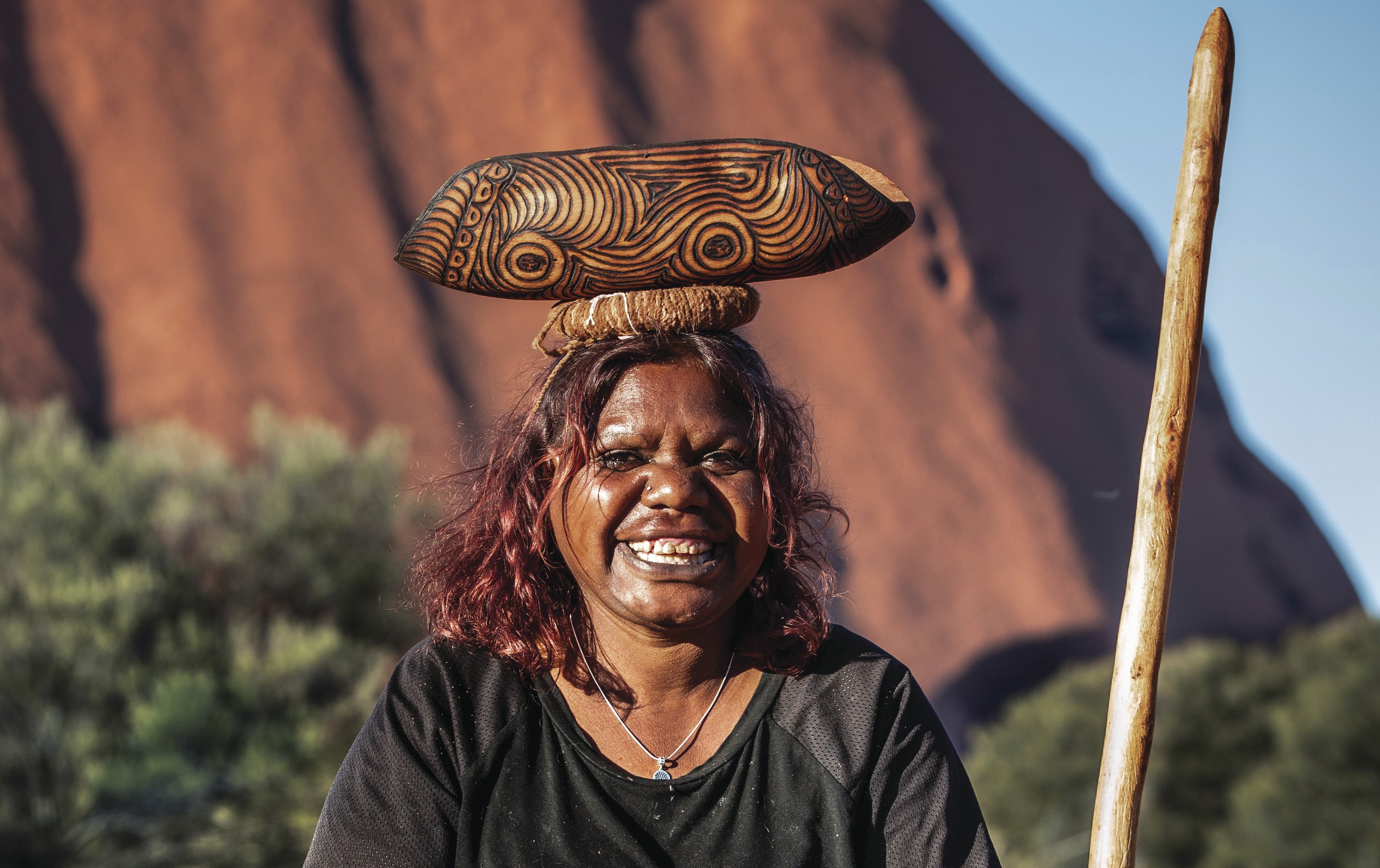 Using a manguri to balance a wooden bowl. Photo: Tourism Australia
Using a manguri to balance a wooden bowl. Photo: Tourism Australia
A manguri is a head ring made of twisted grass or cloth. It was used to help carry loads (like a bowl of water) on the head.
Round grinding stone (tjungari and tjiwa)
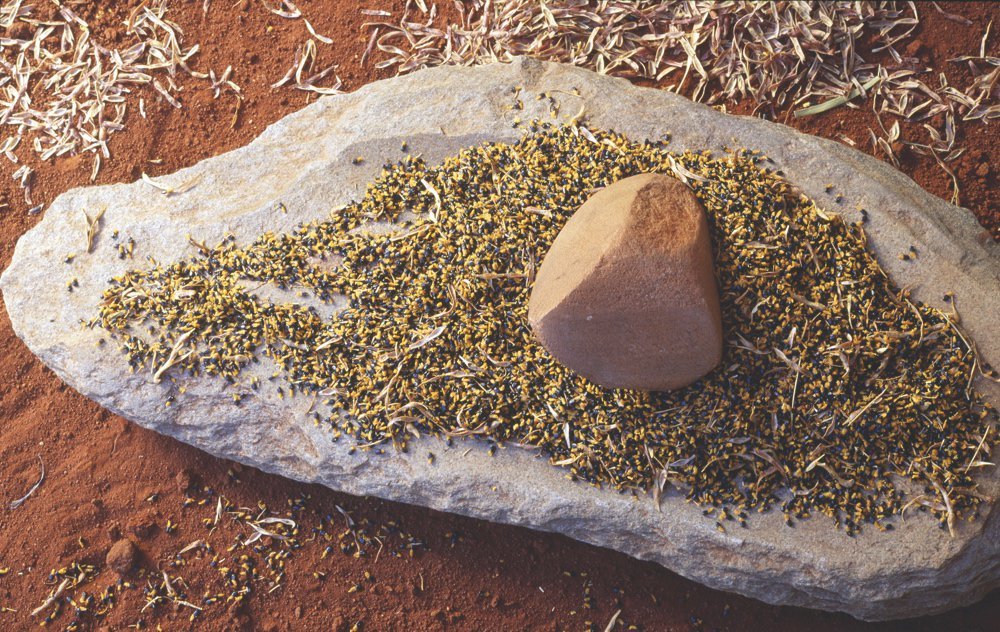 Grinding stone. Photo: Tourism Australia
Grinding stone. Photo: Tourism Australia
This tool is like a mortar and pestle. The base rock, or mortar, is named tjiwa and the handheld grindstone is called tjungari.
These stones are used to process seeds into flour and grind fruit. They are often handed down to daughters and granddaughters.
Men’s tools
Most men’s tools are used for hunting or creating and repairing other tools.
Adhesive gum (kiti)
 Spinifex grass, the source of kiti
Spinifex grass, the source of kiti
Men collect resin from the base of spinifex grass stems. The resin is mixed with sand and heated up to make a sticky paste. When it cools down it sets really hard, just like modern superglue.
Kiti is used for repairing, waterproofing and assembling parts of tools and artefacts.
Boomerang (kali)

Kali are made from mulga wood. They do not return when thrown, and are most often used in pairs as musical instruments during ceremonies.
Other types of boomerang are used to hunt.
Club (tjutinypa)

Central and Western Desert people have always made hunting, fighting and ceremonial clubs out of wood.
Tjutinypa is the most common type for Anangu. It is a long, narrow club often fitted with a quartz cutting edge in the handle. It is mostly used for hunting.
Spear (kulata)

Kulata is a hunting spear about three metres long. It is made from the long, flexible branches of the tecoma vine.
The shaft is made by passing it through a small fire, straightening it and smoothing it down. The flat, hardwood spearhead and barb are secured to the shaft with spinifex resin and lashed together with kangaroo or emu sinew.
Spear thrower (miru)
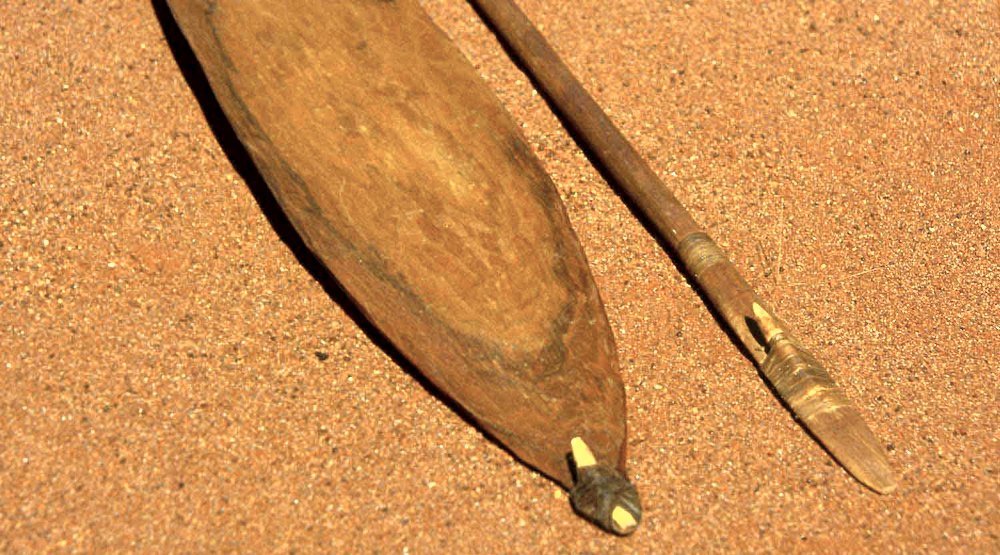
The spear thrower is a multi-purpose tool. As well as throwing spears, it is traditionally used for spear-sharpening, deflecting other spears in combat, cutting meat, mixing ochre and as a fire-making saw.
Want to know more about bush foods and tools?
You can find out about bush foods and tools by attending a presentation at the Cultural Centre or joining our free ranger guided Mala walk.
The short walks at Talinguru Nyakunytjaku also explore the different roles that men and women play in collecting food and making tools.
